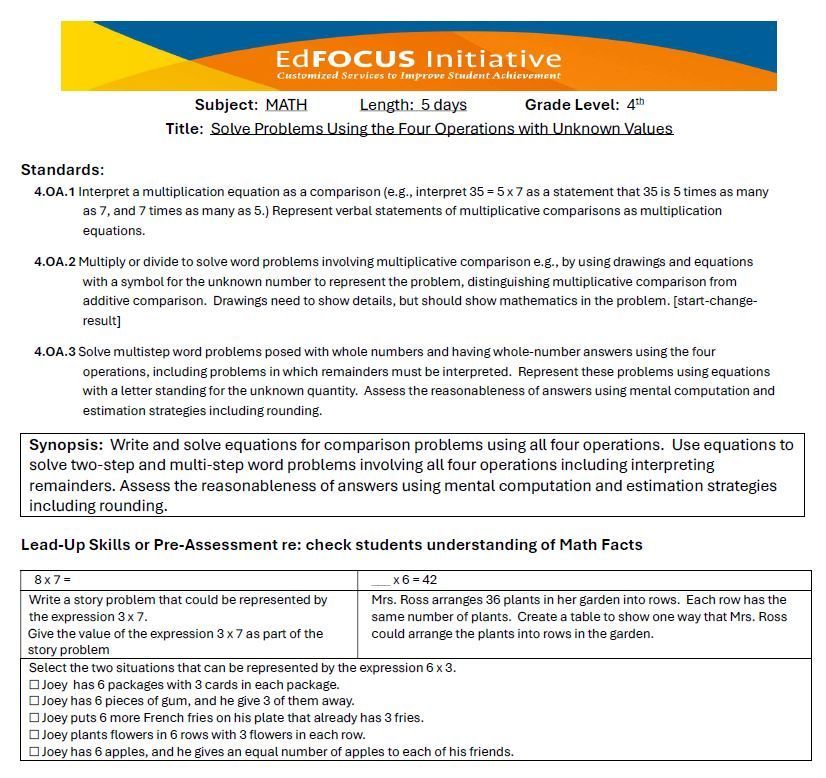Activity Description
Title: SOLVE PROBLEMS USING THE FOUR OPERATIONS WITH UNKNOWN VALUES
Synopsis: Write and solve equations for comparison problems using all four operations. Use equations to solve two-step and multi-step word problems involving all four operations including interpreting remainders. Assess the reasonableness of answers using mental computation and estimation strategies including rounding.
Lead-up Skills / Preassessment: Lead-up skills are listed to help teachers identify any missing readiness skills students may need to attempt the standards in this Activity. The sample reassessment contains a variety of problems to assess student understanding of place value and rounding numbers.
Anchor Problem: at least one is provided for the chunk of standards; this should be posted and referred to during the instruction associated with those standards.
Direct Instruction: Suggested teaching strategies are given that model for students what they need to do to begin their journey toward mastery. These strategies include sample problems to guide authentic practice, requiring students to demonstrate they can construct meaning for themselves. The focus is on writing an equation to solve what the problem is asking. Specific types of problems are given for each standard with steps to the teaching process. The problems used are in the context of real-world situations.
Problems for Practice: Standards-based problems are provided to use for different parts of the instruction, including on the practice work and assessments. These problems require students to document that they have internalized the core ideas of the standard(s) and can show independent mastery.
Final Assessment: At Grades 3-8, the Activities include test items that reflect those used on the High Stakes Tests. There are practice problems leading up to this. The test items are constructed to look exactly like those items students will encounter on their High-Stakes Tests. CUSTOMER: Thanks for considering this Activity as part of your approach to your state’s MATH standards. If you have any comments as to how it worked - - or didn’t! - - we’d welcome them! See the contact information to send us feedback. -- the EdFOCUS Team
This teaching activity comes with one hour of online instruction and guidance from a trained EdFOCUS professional. You will be contacted shortly after purchase with more details.
Product Page

